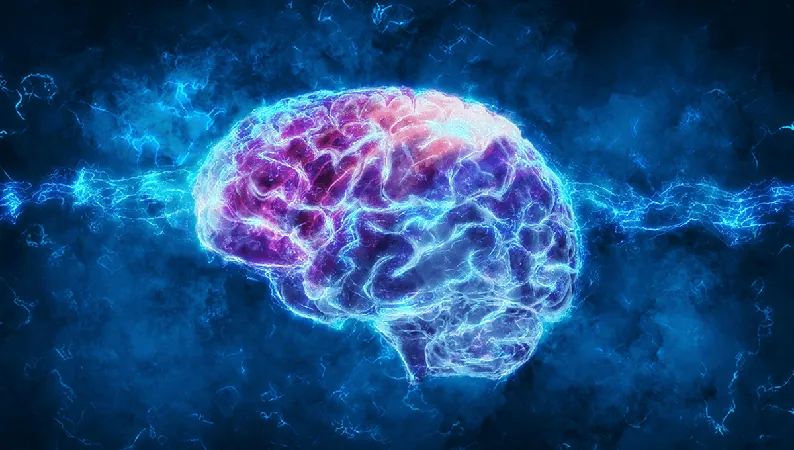
Revolutionary Discovery Unveils How "Bad" Cholesterol Triggers Heart Attacks – You Won't Believe the Implications!
2024-12-27
Author: Wei
Groundbreaking Study on Cholesterol
A groundbreaking study from the National Institutes of Health (NIH) has transformed our understanding of cholesterol, revealing for the first time how elevated levels of low-density lipoprotein cholesterol (LDL-C), often dubbed "bad" cholesterol, lead to life-threatening heart conditions such as heart attacks and strokes. This landmark research sheds light on familial hypercholesterolemia (FH), a genetic disorder that results in dangerously high LDL levels from birth, significantly increasing the risk of early heart disease.
The Impact of Familial Hypercholesterolemia (FH)
Familial hypercholesterolemia affects approximately 1 in 250 Americans and can lead to coronary artery disease that strikes at an incredibly young age. Currently, those with FH often rely on statins or other medications to manage their cholesterol levels. However, thanks to a recent NIH breakthrough, researchers can now observe LDL in a way they couldn't before, effectively capturing a freeze-frame of the molecule's structure which is crucial for understanding its accumulation in the body.
Potential New Medical Strategies
Dr. Alan Remaley, a senior investigator at the NIH specializing in lipoprotein metabolism, emphasized the potential of this discovery to pave the way for new medical strategies: “Our findings offer a promising new approach to enhance the LDL receptor's function, allowing for better binding and removal of LDL from the bloodstream.” This could revolutionize treatment options for those suffering from FH and related diseases.
Significant Technological Advancements
A team from Georgia Tech’s School of Chemistry and Biochemistry, including Dr. Aditi Das and Dr. MG Finn, heralded this technology as a significant leap forward in biology and chemistry. They noted that understanding the structures of biological molecules is key to figuring out how they work and how to tackle defects or harmful effects. "Nature is the supreme molecular architect, and we need techniques like cryo-electron microscopy (cryo-EM) to unlock the intricacies of her designs," remarked Dr. Finn.
Methodology Behind the Discovery
The methodology behind this discovery is equally impressive. The NIH researchers utilized cryo-EM to preserve the structure of LDL, allowing them to visualize it in a frozen state that could be examined using an electron microscope. This technology, valued at between $2 million and $3 million per device, is becoming indispensable in biological research, with two such machines located in Atlanta at Georgia Tech and Emory University.
Understanding LDL Cholesterol's Role in Health
LDL cholesterol is notorious for contributing to cardiovascular disease by causing plaque build-up in arterial walls, which can lead to severe health issues like heart attacks or strokes. While LDL serves a purpose by transporting cholesterol required for energy, repair, and hormone production, excess amounts can become detrimental. Unhealthy dietary choices, particularly those high in saturated and trans fats, can lead the liver to produce too much LDL, exacerbating cardiovascular risks.
The Role of Dietary Fats
Saturated fats are primarily found in animal products like butter and fatty meats, while trans fats lurk in many processed foods, significantly increasing LDL cholesterol levels and decreasing high-density lipoprotein (HDL)— the “good” cholesterol. The American Heart Association has reiterated that reducing these unhealthy fats in favor of unsaturated alternatives—such as those in fish, nuts, and olive oil—can significantly improve heart health.
Looking Ahead to Future Research
As researchers continue to explore the implications of this breakthrough, the hope is that these insights will lead to more effective therapies for managing cholesterol-related health issues that affect millions. Stay tuned for the next chapter in this potentially life-saving research!



 Brasil (PT)
Brasil (PT)
 Canada (EN)
Canada (EN)
 Chile (ES)
Chile (ES)
 España (ES)
España (ES)
 France (FR)
France (FR)
 Hong Kong (EN)
Hong Kong (EN)
 Italia (IT)
Italia (IT)
 日本 (JA)
日本 (JA)
 Magyarország (HU)
Magyarország (HU)
 Norge (NO)
Norge (NO)
 Polska (PL)
Polska (PL)
 Schweiz (DE)
Schweiz (DE)
 Singapore (EN)
Singapore (EN)
 Sverige (SV)
Sverige (SV)
 Suomi (FI)
Suomi (FI)
 Türkiye (TR)
Türkiye (TR)